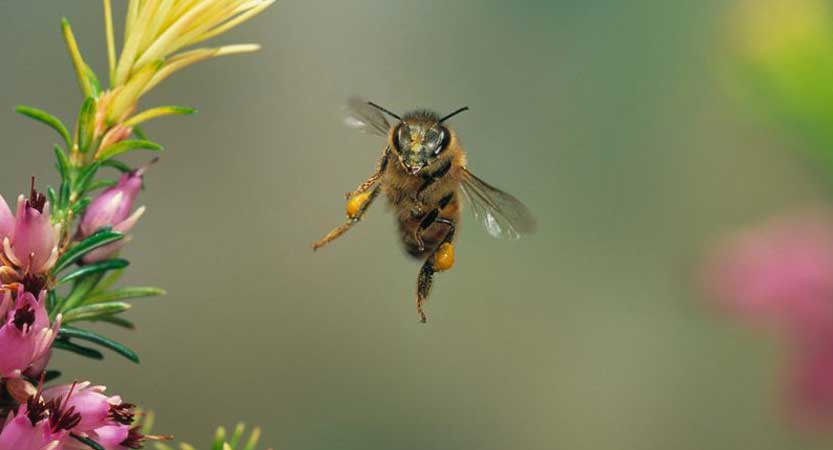What the BUZZ! How would you like it if someone spiked your morning cereal with Cyanide and put a little Arsenic in your coffee. That’s how millions of Bee’s feel everyday.
We have seen an alarming trend with the water samples from our Hope2o consumer product. We are seeing Neonicotinoids and Fipronil in high concentrations in tap water. This means you could be watering your lawn with toxins that kill or inhibit our very important Bee Pollinators.
You may have been seeing a lot about the decline of Bee populations in the news lately. You may or may not understand what that means to you, to food resources, to ecosystems, or even the economy. The short answer is that bees impact all four.
According to the USDA, Bee pollination is responsible for more than $15 billion in increased crop value each year and impacts crops responsible for about 1/3 of our diet [1]. In 1947 the U.S. had as many as 6 million colonies, today’s colony strength is about 2.5 million [2]. This alarming trend started to gain heavy attention by experts in 2006, and was named Colony Collapse Disorder (CCD). In the 2012 a group of experts gathered together to CCD and what it means for our future at the, National Stakeholders Conference on Honey Bee Health. The consensus of these experts was that the current survivorship of honey bee colonies was too low to confidently meet the pollination demands of U.S. agricultural crops [2]. While CCD, has many potential causes, one of the biggest to gain attention is environmental contaminants like Neonicotinoids and Fipronil.
This alarming trend started to gain heavy attention by experts in 2006, and was named Colony Collapse Disorder (CCD). In the 2012 a group of experts gathered together to CCD and what it means for our future at the, National Stakeholders Conference on Honey Bee Health. The consensus of these experts was that the current survivorship of honey bee colonies was too low to confidently meet the pollination demands of U.S. agricultural crops [2]. While CCD, has many potential causes, one of the biggest to gain attention is environmental contaminants like Neonicotinoids and Fipronil.
Neonicotinoids and Fipronil are acutely toxic to honeybees [3, 4]!Neonicotinoids and fipronil are taken up by plants through the root system and then disperse through all parts of the plant. Unfortunately, this includes valuable food and water resources for pollinators, like bees and butterflies, and birds that eat these pollinators.
Neonicotinoids and Fipronil disrupts the insect central nervous system. In very very small the compounds have Sublethal effects (Not enough to instantly kill) on Bees which include:
- Suseptability to Virus’s (from 0.0001 ppb, [5]),
- Lack of Appetite (from 0.001 ppb, [6]),
- Reduced Lobito (from 0.001 ppb, [7]),
- Decreased size of hypopharyngeal glands (from 0.002 ppb, [8]),
- Impaired foraging behavior (from 0.0038 ppb, [9])
- Reduced colony growth and queen production (0.007 ppb, [10]).
- Memory Loss (Not able to find their way home)
These compounds are long lasting commonly used in home insecticides, specifically in ant bait traps. They are also widely used on agricultural crops and as a treatment on seeds. Neonicotinoids and fipronil currently account for approximately one third (in monetary terms in 2010) of the world insecticide market [11]. Unfortunately these compounds persist for a long time, due to this and other factors of their chemical makeup they end up in collecting in; groundwater, water ways, drainage areas, soil, plants, etc.
How do these compounds get in my water and what can I do about it?
 The best thing that anyone can do is to be very careful and not overuse or use these types of pesticides. If you do have to apply them avoid using them during mid-day hours. This is when bees and other pollinators are most likely to be foraging for nectar and pollen on flowering plants.Other things that we can do to help our pollinating friends is to put plants they like in your gardens like red clover, foxglove, bee balm, and joe-pye weed. (visit www.nappc.org.)
The best thing that anyone can do is to be very careful and not overuse or use these types of pesticides. If you do have to apply them avoid using them during mid-day hours. This is when bees and other pollinators are most likely to be foraging for nectar and pollen on flowering plants.Other things that we can do to help our pollinating friends is to put plants they like in your gardens like red clover, foxglove, bee balm, and joe-pye weed. (visit www.nappc.org.) And of course if you test your water and you have these compounds in your tap water you may want to consider putting in a whole house filter or a special filter for your garden water. Or reduce your overall use of water by planting drought tolerant plants!
And of course if you test your water and you have these compounds in your tap water you may want to consider putting in a whole house filter or a special filter for your garden water. Or reduce your overall use of water by planting drought tolerant plants!
Thanks for BEEing concerned!
Lots of love,
Dr. Dre
Click to read the Drinking Water Toxins #3 article



